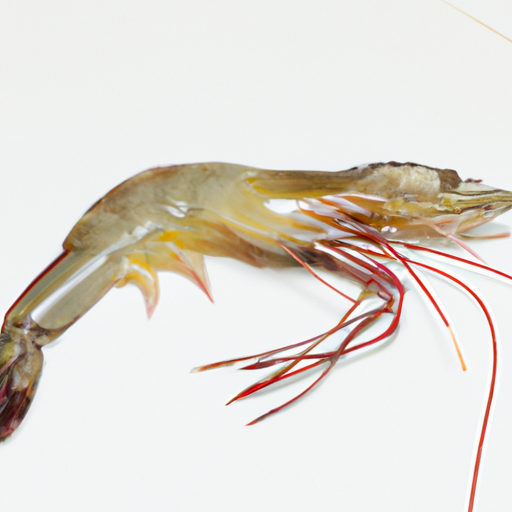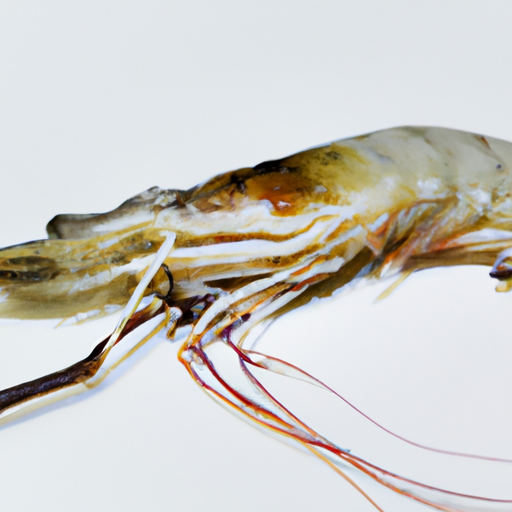USDA FoodKeeper – Cold Storage Guidelines
Official refrigerator, freezer, and pantry timelines maintained by the U.S. Department of Agriculture.
Visit USDA FoodKeeperFresh raw shrimp is a culinary delight, prized for its delicate flavor and versatility in countless dishes. However, it’s crucial to keep this seafood superstar stored in the fridge and consumed within two days to avoid any health risks. Remember, once it’s past its prime, the clock stops—there's no safe grace period after expiration!
Get our 16-page guide with exact timelines for 70+ foods. Save €1,500+/year by knowing what's actually safe to eat.
"According to USDA guidelines, fresh raw shrimp should be stored in the refrigerator at 40°F or below and used within 1 to 2 days of purchase for optimal quality and safety."


Fridge
32°F (0°C)
Store in airtight container with ice packs
2 days
90 days
Unpleasant fishy odor, slimy texture, discoloration
Grilled shrimp skewers, shrimp pasta, shrimp salad
Cooked shrimp, prawns
Fresh raw shrimp should be consumed within 1-2 days of purchase for optimal quality. Over time, shrimp can degrade in texture and flavor as enzymes break down proteins and fats. While the expiration date indicates safety, the best quality is usually within the first few days of purchase. Freezing can extend the shelf life for several months.
To check if raw shrimp has gone bad, look for a slimy texture, discoloration or dark spots on the surface, and a strong fishy or ammonia-like smell. Fresh shrimp should have a firm texture, a translucent appearance, and a mild oceanic scent. If you notice any of these signs, it's best to discard the shrimp to avoid foodborne illness.
Consuming raw shrimp poses risks of bacterial contamination, particularly from Vibrio species such as Vibrio parahaemolyticus and Vibrio vulnificus. To prevent illness, always ensure proper cooking to an internal temperature of at least 145°F (63°C) and avoid cross-contamination by keeping raw shrimp separate from ready-to-eat foods. High-risk scenarios include leaving raw shrimp at room temperature for extended periods and consuming undercooked shrimp.
For optimal storage, keep raw shrimp refrigerated at temperatures below 40°F (4°C) in airtight containers or sealed bags to prevent odor transfer. To maintain freshness, place a layer of ice on top of the shrimp and drain any excess water regularly. Avoid refreezing thawed shrimp and use within a few months for best quality. Marinating shrimp in citrus juice or vinegar can help reduce bacterial risks.
Shrimp has a rich cultural history, with evidence of shrimp consumption dating back thousands of years. In many cultures, shrimp symbolize happiness, abundance, and good fortune. In some regions, shrimp are considered a delicacy reserved for special occasions or festive celebrations. Shrimp are also a versatile ingredient used in a wide range of traditional dishes worldwide.
If Shrimp Fresh Raw has been at room temperature for 2 hours, it's best to discard it. Seafood is perishable and can quickly develop harmful bacteria at room temperature, increasing the risk of foodborne illness.
Once opened, Shrimp Fresh Raw should be consumed within 1-2 days for optimal freshness and safety. Ensure it's tightly sealed in a container to minimize exposure to air and odors in the fridge.
Yes, the type of container can impact the shelf life of Shrimp Fresh Raw. It's best to store seafood in airtight containers to prevent exposure to air and moisture, which can accelerate spoilage. Consider using glass or BPA-free plastic containers for optimal freshness.
It's recommended to store Shrimp Fresh Raw separately from other seafood in the fridge to prevent cross-contamination. Use separate containers or compartments to avoid raw juices from one type of seafood contaminating another.
Freezing Shrimp Fresh Raw can affect its texture upon thawing. The shrimp may become slightly mushy or lose some of its firmness due to ice crystal formation during freezing. Consider using frozen shrimp in cooked dishes rather than raw preparations for better texture.
The shelf life of Shrimp Fresh Raw can vary between brands due to factors like processing methods, packaging, and storage conditions. Always refer to the expiration date on the packaging and follow any specific storage instructions provided by the brand for optimal freshness.
Cooking Shrimp Fresh Raw can extend its shelf life in the fridge compared to raw shrimp. Cooked shrimp can typically be stored in the fridge for 3-4 days. Ensure it's properly cooked to the recommended internal temperature to kill any harmful bacteria.
Shrimp Fresh Raw tends to last slightly longer in the fridge during winter months due to cooler ambient temperatures. In summer, higher temperatures can accelerate bacterial growth, shortening the shelf life of seafood. Always prioritize proper refrigeration regardless of the season.
When transporting Shrimp Fresh Raw, keep it in a cooler with ice packs to maintain a temperature below 40°F (4°C). Ensure the shrimp is tightly sealed in leak-proof containers to prevent any juices from leaking and cross-contaminating other foods. Discard any shrimp that has been above the safe temperature range for more than 2 hours.
Stop guessing about expiration dates. Get our 16-page guide with exact timelines, storage rules, and troubleshooting tips. Save €1,500+/year.
Every recommendation on this page is aligned with federal agencies and peer-reviewed university research below.
Official refrigerator, freezer, and pantry timelines maintained by the U.S. Department of Agriculture.
Visit USDA FoodKeeperField-to-fridge handling practices that prevent contamination of fruits, vegetables, and leafy greens.
Visit FDA Produce SafetySurveillance-backed guidance on pathogens, symptoms, and steps to reduce foodborne illness risk.
Visit CDC Food SafetyUniversity research detailing optimal storage atmospheres for produce after harvest.
Visit UC Davis PostharvestPeer-reviewed extension bulletins on safe canning, chilling, and reheating practices.
Visit Penn State ExtensionNeed deeper reading? Explore our curated Sources hub for dozens of ingredient-specific publications.
Scan your food directly and get instant safety info using our AI-powered camera feature.
Grains & Pasta
View expiration date and storage guide →
Herbs and Fresh Produce
View expiration date and storage guide →
Meat & Poultry
View expiration date and storage guide →
Herbs and Fresh Produce
View expiration date and storage guide →
Dairy Products
View expiration date and storage guide →
Fruits & Vegetables
View expiration date and storage guide →
Dairy Products
View expiration date and storage guide →
Meat & Poultry
View expiration date and storage guide →
Dairy Products
View expiration date and storage guide →
Important: These are general guidelines based on authoritative sources listed above. Always use your best judgment and when in doubt, throw it out. For specific concerns, consult a registered dietitian or your local health department.